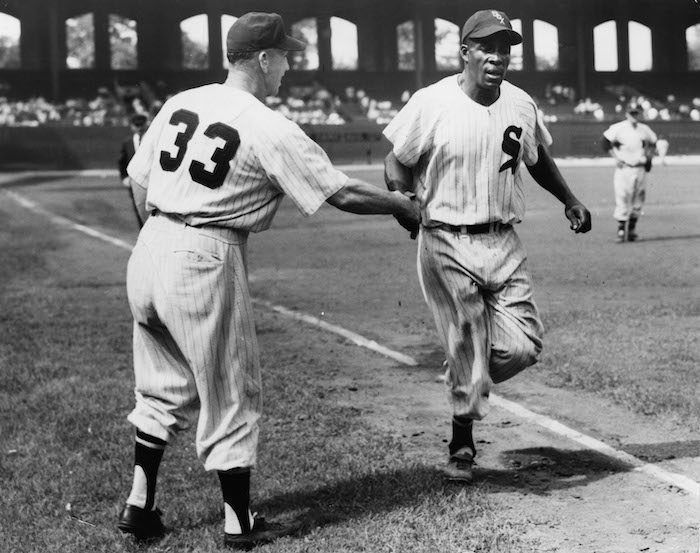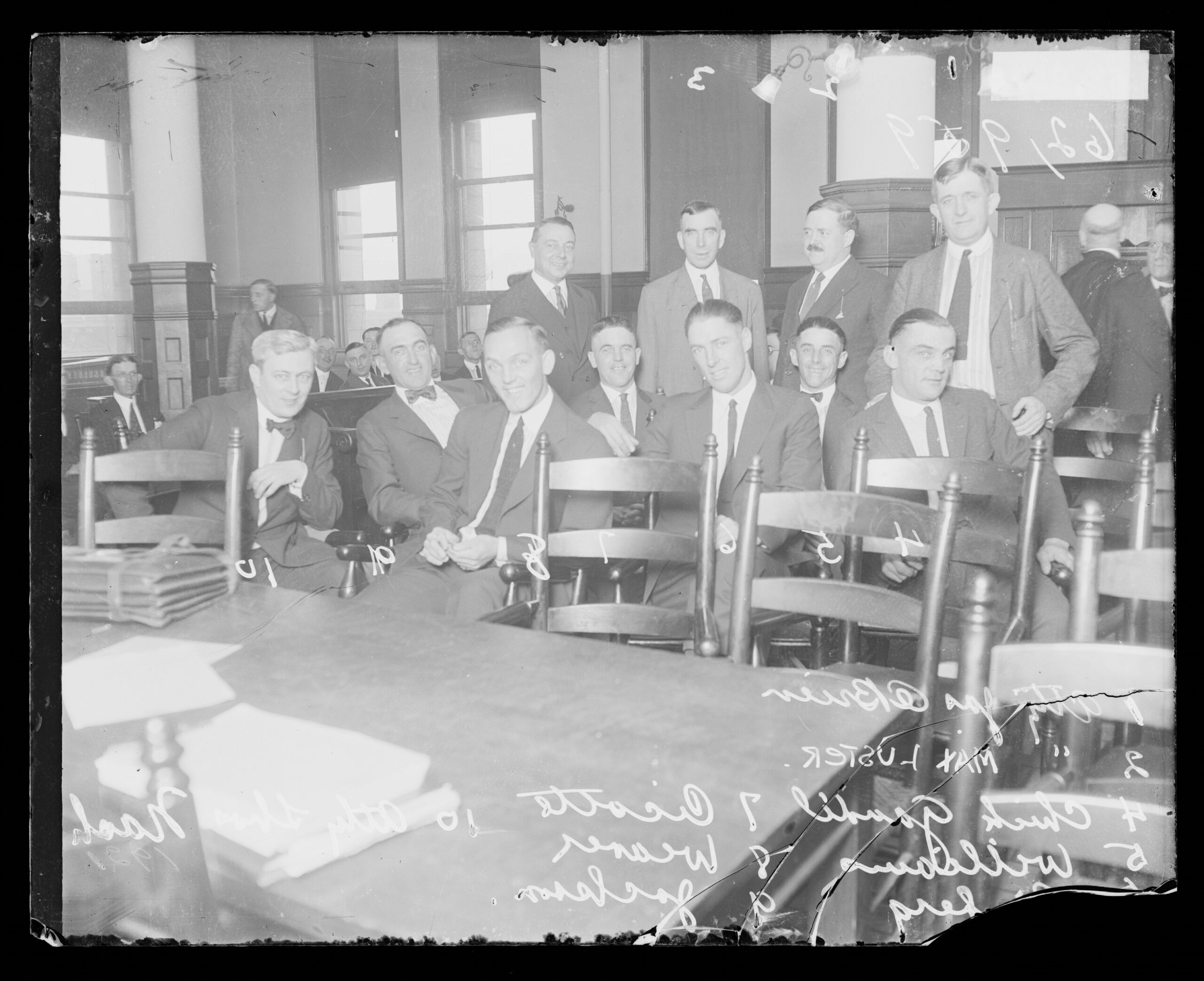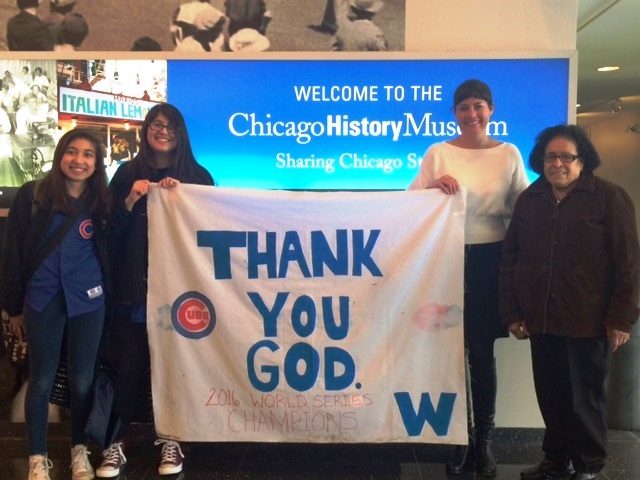With the city’s unpredictable Midwestern weather, Chicago’s outdoor athletes have had to get creative when it comes to staying active indoors. In this blog post, editor and content manager Heidi Samuelson writes about the rise and fall of indoor baseball and its continued legacy.
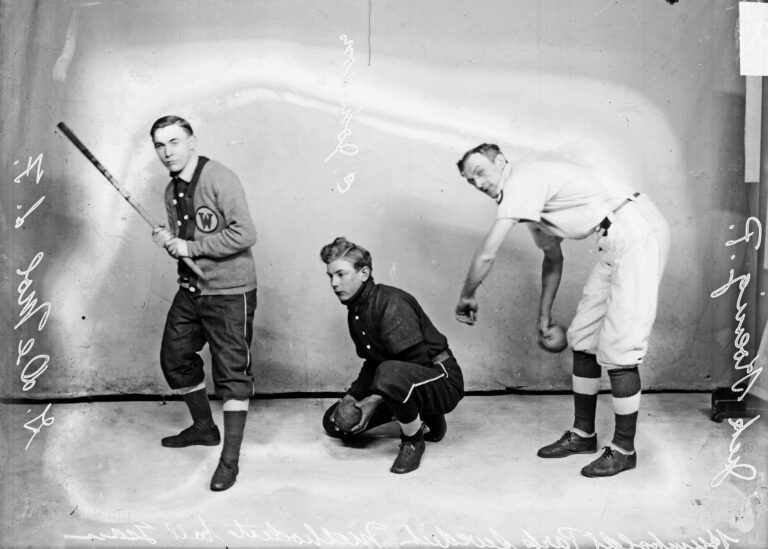
Portrait of G. De Mol (holding a bat), E. Johnson (kneeling), and Jack Hoenig (pitching stance) of the Humboldt Park Swedish Methodist indoor baseball team, 1909. SDN-007248, Chicago Daily News collection, CHM
Indoor baseball originated on Thanksgiving Day 1887 by George Hancock, a reporter at the Chicago Board of Trade, at the Farragut Boat Club on Chicago’s South Side. The story goes that he went to the club to find out the score of the Yale-Harvard football game, where a group of Yale and Harvard alums were following the game via telegram. Yale lost the game. After a Yale alumnus jokingly threw a boxing glove at another member who batted it away with a stick, Hancock got the idea to draw a diamond on the gymnasium floor. With a rough set of rules, the members began playing the first game of “indoor baseball” with a tightly wrapped glove and a stick. By winter’s end, the boat club was playing games with other clubs.
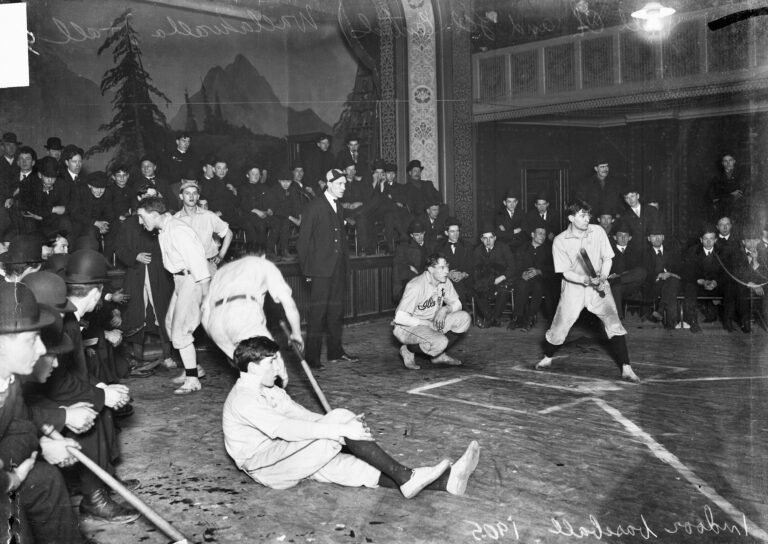
Chicago-Illinois Central indoor baseball game in a gymnasium, Chicago, 1905. SDN-003190, Chicago Daily News collection, CHM
The basic equipment for “indoor baseball” was a soft 17-inch ball and a thin, stick-like bat. Players didn’t wear gloves, the bases were placed 27 feet apart (compared to 90 feet apart on an outdoor baseball diamond), and the pitcher was only 22 feet from home plate. The game appealed to rowers, who were stuck indoors in winter months, but it soon spread across the Chicago area. By winter 1891–92, there were more than 100 teams organized in amateur leagues.
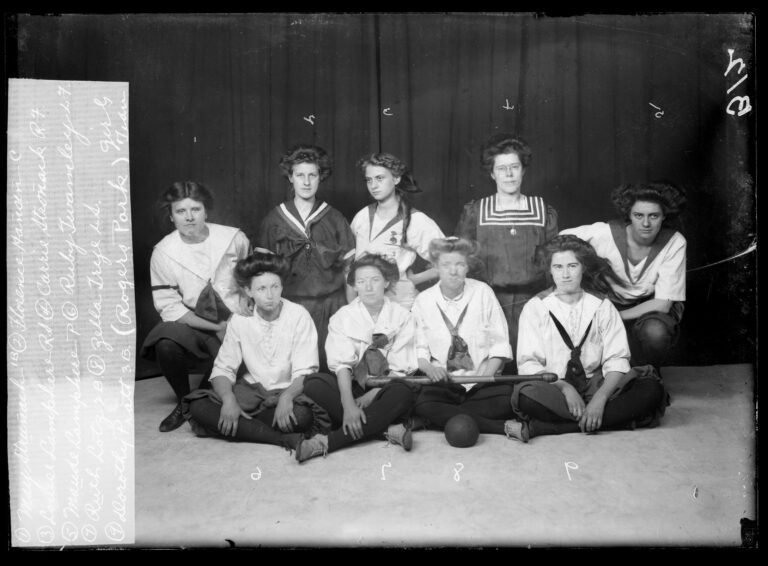
Group portrait of members of the Rogers Park girls’ indoor baseball team, 1909. SDN-007848, Chicago Daily News collection, CHM
Colleges and high schools, girls and boys, began to embrace the sport a few years later in December 1895, when 10 schools formed a league. Indoor baseball was particularly popular on the city’s West Side, and English High (later Crane Tech), Medill, and West Division (later McKinley) were dominant in league play. In 1899, West Division formed a girls’ league, having started playing intermural games in 1895, which included the West Side’s Marshall and Medill.
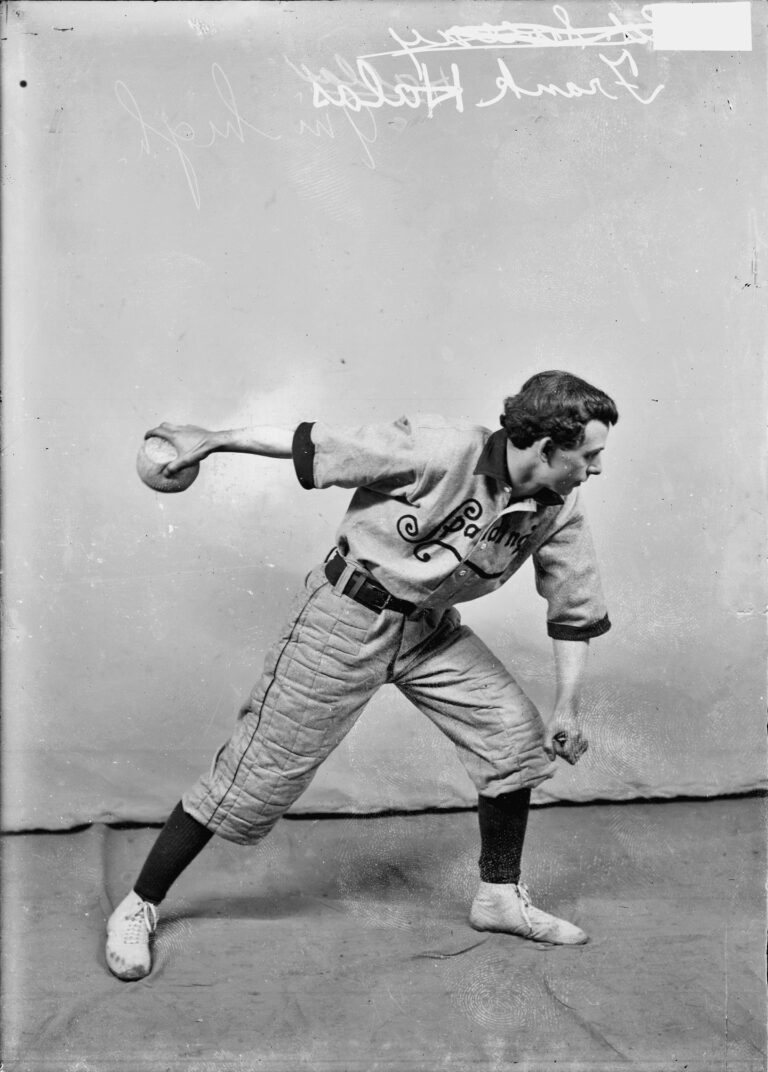
Frank Halas, indoor baseball player, winding up for a pitch, 1907. SDN-005286, Chicago Daily News collection, CHM
The sport was particularly popular among Czech Americans. Among its notable players were the Halas brothers, including George Halas, future owner of the Chicago Bears. George’s older brothers Frank and Walter were both standout players. The Halas brothers played at Crane Tech, and Frank also played in the Chicago Indoor Baseball League.
Around 1907, players began moving the game outdoors, changing the name to “playground ball” and later “softball.” In the 1910s, the indoor version declined in popularity, due to the rapidly growing popularity of basketball, and by the 1920s, indoor baseball was essentially nonexistent.
However, its legacy continued through 16-inch slow-pitch softball, sometimes called Chicago ball. The first 16-inch softball national championship was held during the 1933–34 A Century of Progress world’s fair. From there, a professional league formed, which existed through the 1950s. The sport is still played in Chicago today in recreational leagues, and you can visit the 16 Inch Softball Hall of Fame in Forest Park, Illinois.
